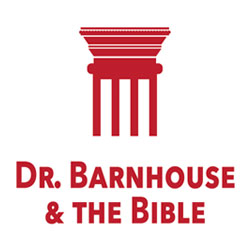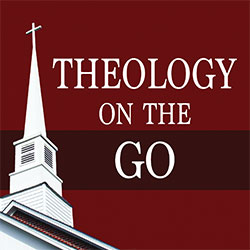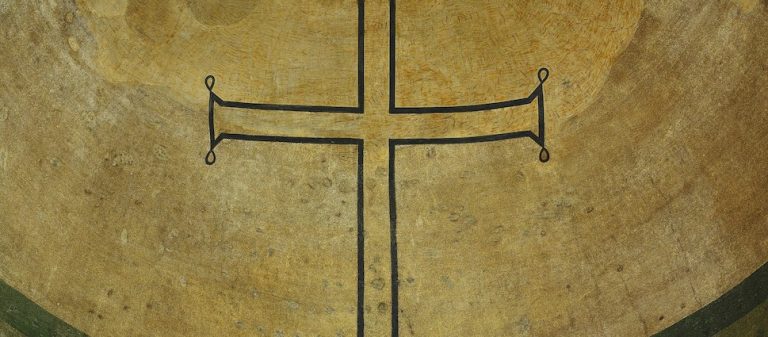His Writings
In our last post, we considered William Tyndale as a translator and will now look at some of his writings before examining his theology more closely next time. Much of his writing occurred in connection with his translation work in the form of book prologues. So, by the time of his death, he had written introductions to 25 New Testament books (all except Acts and Revelation) and 6 Old Testament books (the Pentateuch and Jonah). In general, these showed dependence on Luther’s own German prologues but not without differences. For example, in the next post, we will consider how Tyndale departed from Luther on the doctrine of justification.
Tyndale also published two commentaries, The Exposition of the First Epistle of St. John (1531) and The Sermon on the Mount: An Exposition of the Fifth, Sixth, and Seventh Chapters of Matthew (1533), both of which confront the church who distorted the law of God in a manner similar to the scribes and Pharisees. On a more practical level, both commentaries stress that justification comes not by observing the law but only through faith in Christ. Yet, the “keeping of God’s commandments certifies that we be in the state of grace” (First Epistle of St. John) and remission of sin in Christ leads us to “love the law truly” as that restored “unto her right understanding” (Sermon on the Mount).
Of his other works, we will consider four in more detail below. Others not treated here are his Answer to Sir Thomas More’s Dialogue (1531), discussed briefly in our second post; and The Supper of the Lord (1533) and A Brief Declaration of the Sacraments (1536), surveyed in our next post. Another work to mention in passing is The Testament of William Tracy Expounded (1535), a last will and testament of Tracy (d.1530) and Tyndale’s commentary on it. His interest here may seem odd at first, until we recognize that Tracy, an Augustine scholar and possibly a Wycliffite, personally knew Tyndale and had a considerable impact on his theology. Tracy “was a learned man,” notes Tyndale, and more familiar with “the works of St Austin twenty years before he died than ever I knew doctor in England.”
A Pathway into the Holy Scripture (1536, from 1526)
This guide to reading the Scripture prefaced the 1526 Tyndale New Testament giving us the first taste of his actual writing. This brief but important treatise was later reprinted separately as A Pathway into the Holy Scripture (1536). The guide provides the reader with key biblical terms and concepts as helps for understanding the Bible. Early on, it introduces the Old Testament “wherein is written the law of God,” which condemns us as imperfect. This condition drives us to Christ who was foreshadowed in the Old and revealed in the New Testament “wherein are contained the promises of God.” This Evangelion (a term originating with Tyndale) concerns the good tidings to those who believe and have forgiveness “in the blood” of Christ who makes “satisfaction” for their “unperfectness.” In what is arguably the key statement in the book, Tyndale alludes to his covenant theology and how it relates to our redemption: “By grace. . . we are plucked out of Adam” to be ingrafted “in Christ” through whom God eternally loved us as “his elect” and “openeth our hearts” by the Spirit to believe when the “gospel is preached.” As a result, “we know him as our Father most merciful” and now “consent to the law” though with “frailty” standing in need of “the blood of Christ,” which “made satisfaction for the rest” of our imperfections. “By faith are we saved only,” Tyndale later notes, though such “be never without love and good works.” In summary, Christ acts in two ways for us: as a “Redeemer” and “an example to counterfeit,” the latter of which simply and positively means to imitate.
The Parable of the Wicked Mammon (1528)
This book expands upon Luke 16:1–13, otherwise known as the parable of “the unjust steward.” It is less an exposition of the parable and more a treatise on justification, as seen in the conclusion, for which Tyndale gives the heading, “A Short Rehearsal Or Sum of this Present Treatise of Justification by Faith.” In the work, Tyndale teaches that faith in Christ justifies us apart from good works and, on account of such, God will “count us for full whole.” At first glance, this sounds like being accounted righteous through the righteousness of Christ imputed to us and received by faith. Instead, Tyndale sees Christ’s blood making “amends” for the imperfections of our hearts that now, through the work of the Spirit, “consent . . . unto the law.” Indeed, “Christ is our Redeemer” who makes “satisfaction to Godward for all the sin which they that repent (consenting to the law and believing the promises) do, have done, or shall do.” We in “fragility” may unintentionally “fall a thousand times in a day,” but, if we repent, there is “always mercy laid up for us” in Christ. Still, “if works follow not, yea, and that of love, . . . thou mayest be sure that thy faith is but a dream” and even a dead faith, as James says. In summary, Tyndale expresses a gracious though renovative form of justification through the cleansing power of Christ’s blood to make us whole. Keep in mind, his thinking occurs early on in the Reformation before a clear theology of forensic justification was set forth. We will take this matter up in more detail next time.
The Obedience of a Christian Man (1528)
In the subtitle of this work, Tyndale proposes to consider “Christian rulers” and how they “ought to govern” along with making clear the “crafty” manner in which all “jugglers” carry themselves. These refer to the cunning authorities of the Catholic church who abused power, distorted the Bible (e.g. by arguing the necessity of philosophy “ere [one] can understand the scripture”), and manipulated people in the process. The church held people in bondage to the church and its works-based scheme of salvation. Tyndale’s exposure of such ecclesiastical oppression (e.g. the “pope’s false power”) did not suggest anarchy as a solution, for these were the very means used by the church. Instead, he advocates the proper obedience of a Christian to rightful authorities (as well as teaching “how” authorities “should rule”) and all according to the Scriptures. Such obligations extend to all areas of life under authority: Children unto their “elders,” wives unto their husbands, “servants” unto their “masters,” and subjects unto the civil magistrate. Even when the Christian suffers at the hands of unjust authority (e.g. the pope), the “peaceable doctrine of Christ” teaches us to leave vengeance to the Lord. Tyndale begins with an encouragement to read the Bible (in English) even though at the time it was at the “pain of life and goods.” He also declares that we can be “sure that the pope’s doctrine is not of God” with its focus on a worldly authority. Such evokes an ungodly fear among the people who then render impurely-motivated obedience. God’s Word resists such hypocrisy. Indeed, “if God be on our side,” it matters not “who be against us, be they bishops, cardinals, popes, or whatsoever names they will” and blessed are those who suffer (and they must) in the Lord’s strength and for the sake of his kingdom. In connection with the false doctrine Tyndale discerns, he assaults the seven sacraments of Rome (and the false doctrine of “purgatory-pick-purse” along with them) leaving only baptism and the Lord’s Supper, which are effective only by “faith in the promise” signified. Likewise, he rejects the blind “sophistry” of the four-fold method of exegesis while advocating the “one . . . literal sense.” This approach, in a very relevant manner, encompasses the various genres of the Scripture sought out “diligently” and understood figuratively (e.g. proverbs, similtudes, riddles, and allegories).
The Practice of Prelates (1530)
This attack on Roman Catholic “prelates,” or clergy with authority over others, sees the hierarchical polity of the Catholic church arising from a greedy ambition for power. Out of such, arose the papacy, in the tradition of the hypocritical scribes and Pharisees. At length, Tyndale unfolds what he sees as the corrupt papacy from its emergence to current times, and in connection with tainted monarchies such as that of Charlemagne, who “knew no other god but the pope,” Tyndale alleges. Within the papal hierarchical system in Tyndale’s time, he implicates the contemporary church in England under the influence of Cardinal “Wolfsee” Wolsey of York. Scripturally, Tyndale viewed Christ as the head of the church with preachers serving as “vicars” in his bodily-absence and for the furtherance of an other-worldly kingdom. Thus, Tyndale decries the worldly tendencies of prelates to “leave God’s word, and minister temporal offices” and at times in a most cruel and heavy-handed manner. In this way, he regarded the pope as a “wolf in a lamb’s skin” who calls himself “Servus servorum, the servant of all servants, and is yet found Tyrannus tyrannorum, of all tyrants the most cruel.” As his book subtitle, “Whether the king’s grace may be separated from his queen,” indicates, Tyndale eventually takes up the matter of Henry’s divorce from Catherine of Aragon and dismantles the superficial biblical arguments devised by the English prelacy. In the process, he manifests a sophisticated yet sound hermeneutical approach with a three-fold understanding of the Old Testament law and how it applies today. Clearly, Tyndale sees no legitimate grounds for the divorce, and at the same time, he takes care not to out-rightly condemn it.
In summary, Tyndale was an intellectual and insightful writer whose writings were profoundly connected to his social, political, and ecclesiastical contexts. Yet, what emerges most prominently in his writing is a servant of Christ writing in the interests of his kingdom. As Tyndale attests of his translation work in his original New Testament preface, “I submit this book, and all other that I have either made or translated, or shall in time to come, (if it be God’s will that I shall further labour in his harvest,) unto all them that submit themselves unto the word of God, to be corrected of them.” Indeed, this could be said of all his writings. David Teems in, Tyndale: The Man Who Gave God and English Voice (Thomas Nelson, 2012), rightly sums up Tyndale as a writer, “He was an exceptional writer—gifted, instinctual, intuitively spare. He was a bit of an anarchist (as the best writers often are). But his genius was useful to him only as it served a greater purpose, which for Tyndale was always spiritual.”
Previous Posts:
1. Life in England
2. Life in Exile
3. His Translation Work
Bob McKelvey (@mckelvrj) is program coordinator of the Puritan Studies Program in connection with the Jonathan Edwards Center Africa at the University of the Free State in Bloemfontein, South Africa. He is also lecturer in Historical Theology at John Wycliffe Theological College in Johannesburg, South Africa, and extraordinary senior lecturer at North-West University in Potchefstroom, South Africa. He is the author of Histories that Mansoul and Her Wars Anatomize: The Drama of Redemption in John Bunyan’s Holy War and a contributor to Drawn into Controversie: Reformed Theological Diversity and Debates within Seventeenth-Century British Puritanism.

























